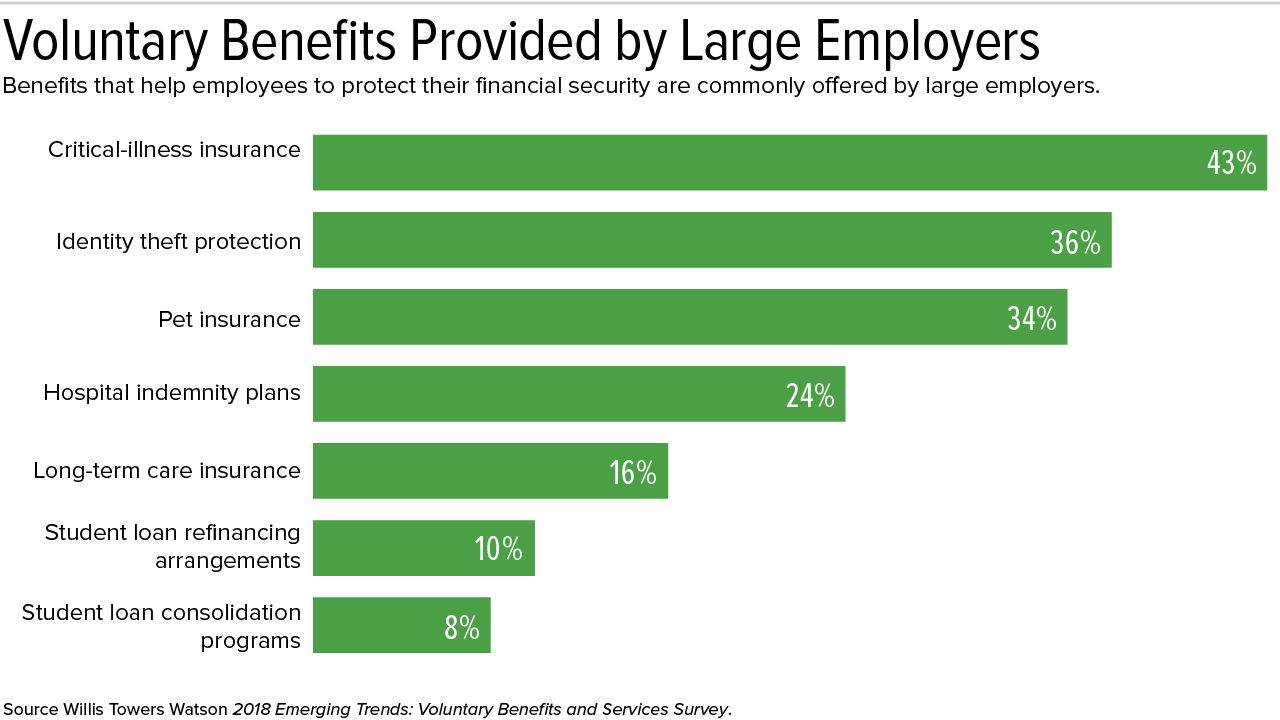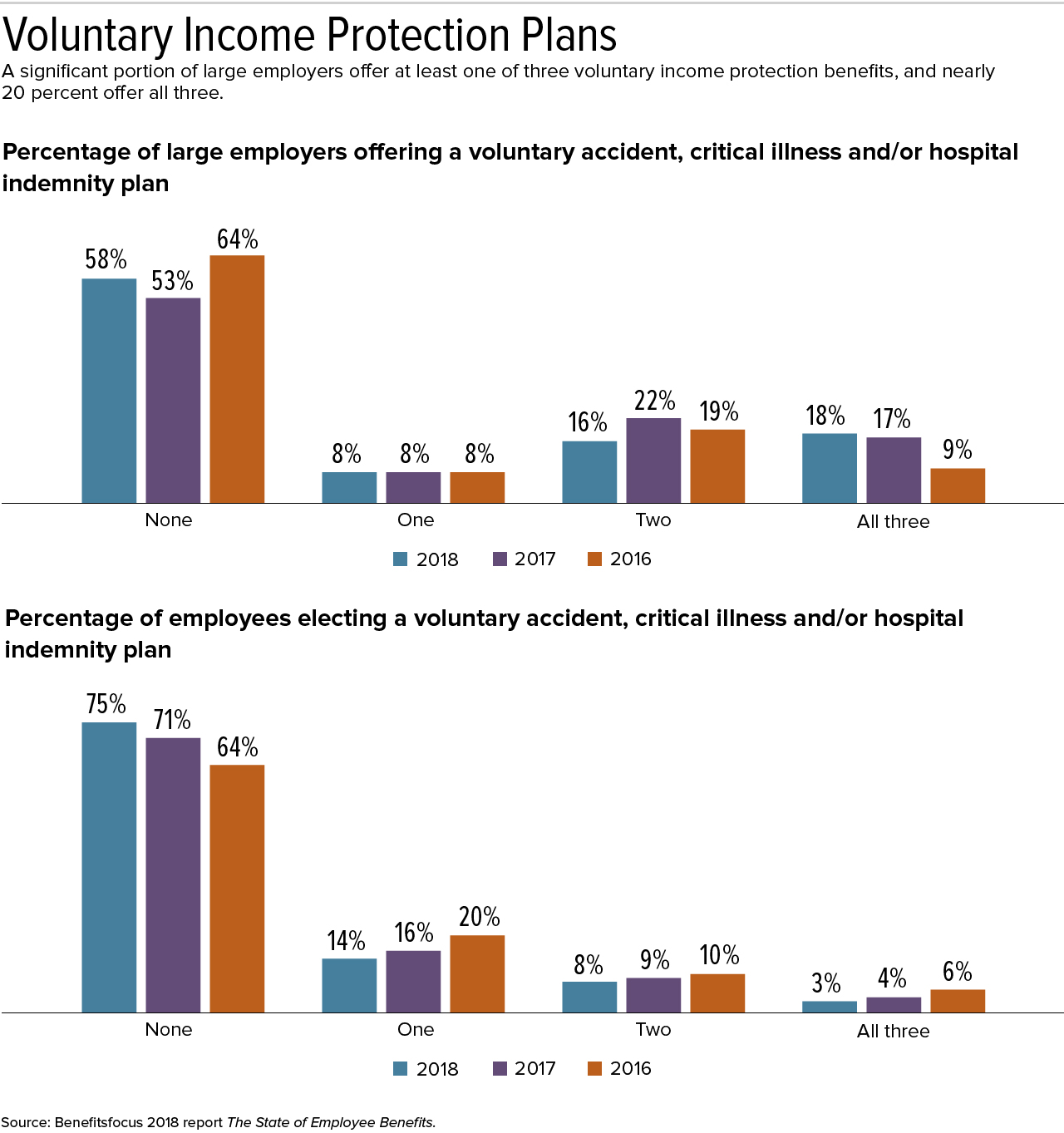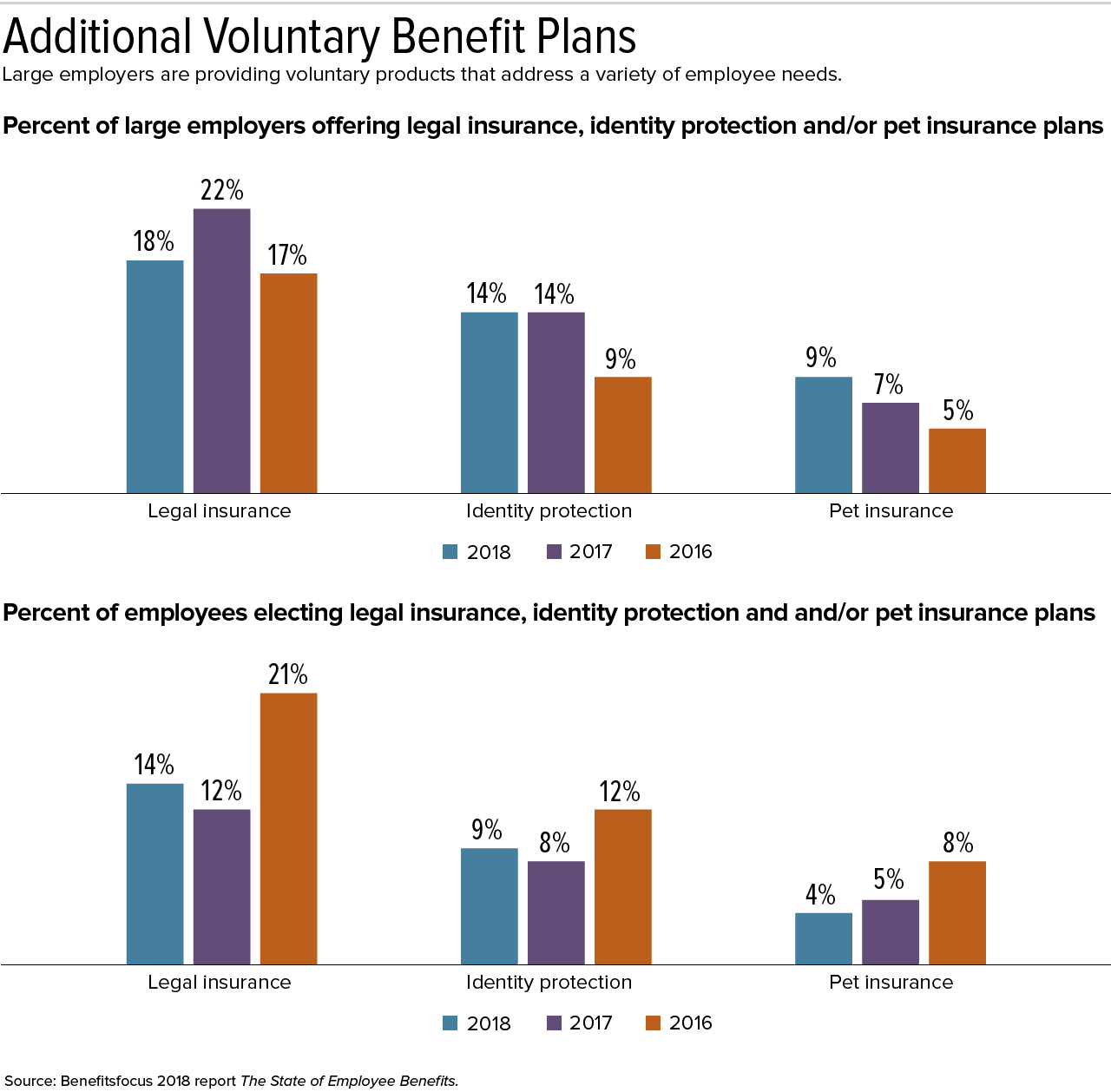Voluntary Benefits Now Essential, Not Fringe
Student loan help and financial planning aid are among offerings on the upswing

Employers no longer consider voluntary benefits as simply add-ons but rather as "a way to address a host of employee needs, offer choice and allow employees to personalize their rewards," said Lydia Jilek, director of voluntary benefits at consultancy Willis Towers Watson.
Voluntary benefits are supplemental to core health insurance and retirement savings plans and are typically employee-paid through salary-deferred contributions. They can be a cost-efficient way to provide additional coverage to employees, who can purchase these plans through their employer at a lower, group rate.
Newly released findings from Willis Towers Watson's 2018 Emerging Trends: Voluntary Benefits and Services Survey of large employers show that:
- Only a handful of respondents (5 percent) say voluntary benefits will have little importance to the value they offer employees through their total rewards strategy. Five years ago, 41 percent of employers said voluntary benefits would have little importance.
- More than two-thirds of employers (69 percent) believe voluntary benefits will be a very or more-important component of their total rewards strategy in three to five years.
The survey was conducted in November 2017, with responses from 336 large U.S. employers representing more than 4.3 million employees. Eighty percent of the respondents have more than 1,000 employees.
"While employers continue to embrace traditional voluntary benefits, such as life and disability coverage, they are offering benefits more often to help employees and their families with their financial issues," said Mary Tavarozzi, managing director of health and benefits at Willis Towers Watson.
(Click on graphic to view in a separate window.)
"The good news is that improvements in enrollment technology are making it easier for employers to expand their voluntary benefit offerings—and the expanded choices are resonating," said Sherri Bockhorst, managing director of benefits delivery and administration at Willis Towers Watson.
[SHRM members-only toolkit: Designing and Managing Flexible Benefits (Cafeteria) Plans]
Options on the Rise
"Attractive benefits can make the difference between whether a prospective employee accepts a job offer or not," said Ray August, CEO of Benefitfocus, a benefits management software company. The firm's 2018 report The State of Employee Benefits, published earlier this year, analyzed data from 540 large employers with more than 1,000 employees, representing 1.3 million benefit plan enrollees.
"For 2018, 42 percent of employers offered at least one of three voluntary income protection benefits to their employees—voluntary accident, critical illness and/or hospital indemnity plans—and 18 percent offered all three," said Justin Verona, Benefitfocus lead researcher and co-author of the report. Those numbers are up from their 2016 levels.
"Employees continue to appreciate these options," added Logan Butler, Benefitfocus lead writer and report co-author. "When given the choice, 25 percent elected at least one of the three voluntary income protection products for 2018, with over 20 percent enrolling in multiple plans."
"It’s clear that workers are increasingly interested in building financial security in areas beyond health care," Verona said, noting that participation in identity protection and legal insurance plans increased by 17 percent and 13 percent, respectively, year over year.
"Through a wide array of voluntary benefit options, employers can offer a more comprehensive benefits package to cover practically every aspect of their employees' lives," Butler noted, "but each life is different, and employees need help understanding the variables that impact their coverage needs and identifying the combination of benefits that's right for them."
Related SHRM Articles:
Tips for Launching a Student-Loan Repayment Benefit, SHRM Online Benefits, October 2017
Open Enrollment: Voluntary Benefits Emphasize Choice, SHRM Online Benefits, September 2018
Use Voluntary Benefits to Attract and Keep Part-Time Workers, SHRM Online Benefits, August 2017
Was this article useful? SHRM offers thousands of tools, templates and other exclusive member benefits, including compliance updates, sample policies, HR expert advice, education discounts, a growing online member community and much more. Join/Renew Now and let SHRM help you work smarter.
An organization run by AI is not a futuristic concept. Such technology is already a part of many workplaces and will continue to shape the labor market and HR. Here's how employers and employees can successfully manage generative AI and other AI-powered systems.






